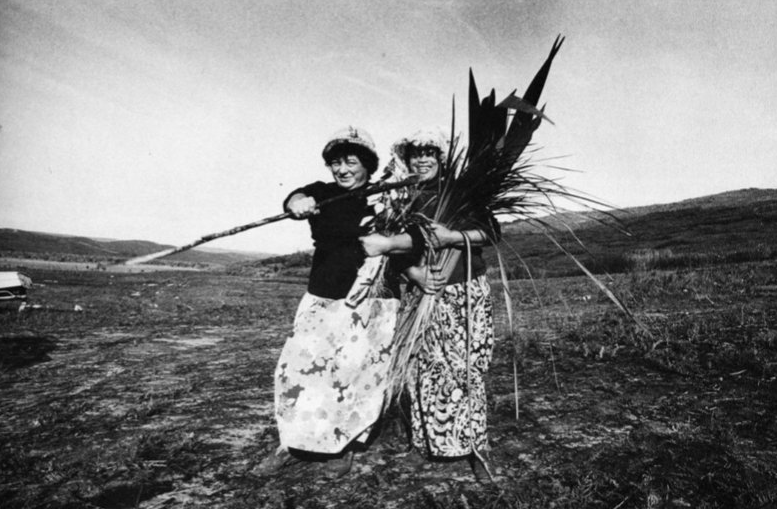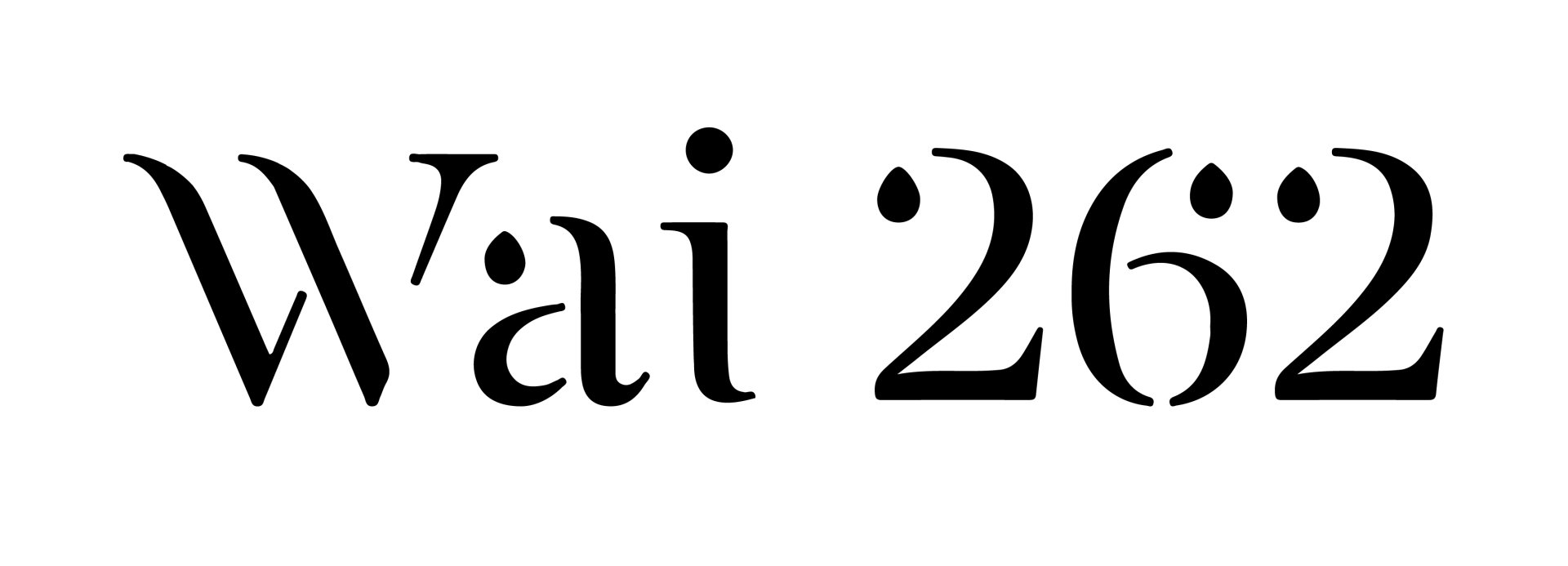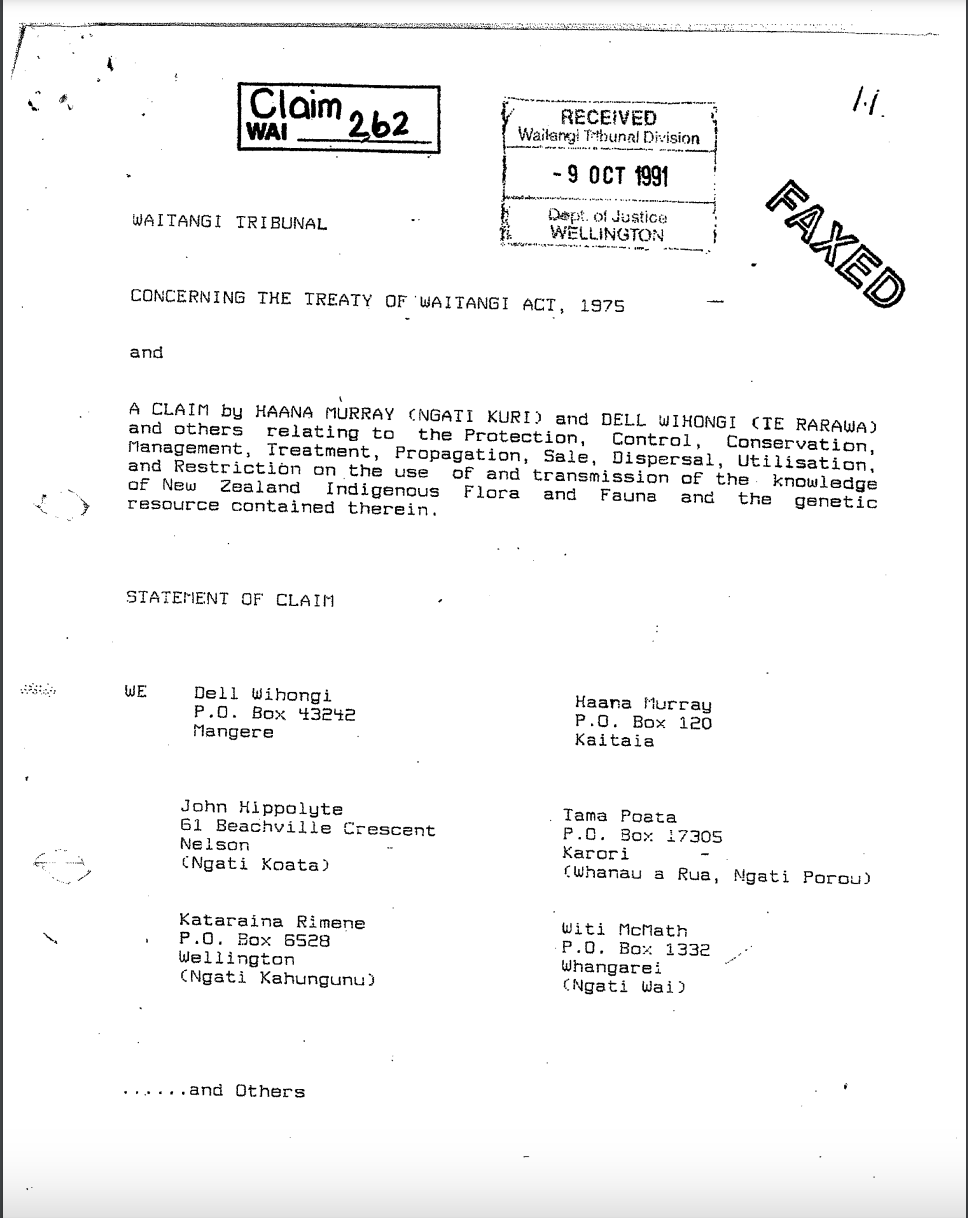“Ko te tino rangatiratanga me te mana motuhake o
o tātou taonga me ngā mātauranga Māori.”
Our whenua, moana, wai, taonga and mātauranga are very unique to Aotearoa. The environment we live in is influenced by what we collectively view as most important, and just like whakapapa of us as people, there is an obligation to protect the whakapapa of Aotearoa so it remains a taonga tuku iho for those to come.
Three decades ago, in 1991, six visionaries of kaupapa Māori stepped forward to assert kaitiakitanga to the Crown in the reclamation of whenua, moana, wai, taonga and all mātauranga here in Aotearoa. These visionaries were;

Saana Waitai-Murray of Ngāti Kuri
Del Wihongi of Te Rarawa
John Hippolite of Ngāti Koata
Witi McMath of Ngātiwai
Tama Poata of Ngāti Porou and Te Whānau a Ruataupare
Kataraina Rimene of Ngāti Kahungunu
These six tūpuna laid their claim, being the 262nd claim, with the Waitangi Tribunal. Wai 262 is commonly known as the Fauna, Flora and Intellectual Property Rights claim, which sought the protection of taonga Māori by tāngata Māori (protection, conservation, management, treatment, propagation, sale, dispersal, utilisation, and restriction on the use of and transmission of the knowledge of New Zealand Indigenous Flora and Fauna and their resources).
The first taonga introduced for protection were kūmara, pōhutukawa, koromiko, puawānanga, pūpūharakeke, tuatara and kererū/kūkupa. With others added over time.
As Wai 262 progressed so too did the whānau, hapū and iwi within Wai 262 as they continued the active protection of taonga and mātauranga Māori within their iwi and rohe. However, it hasn’t stopped there, the claim now forms the stepping stones for the protection of taonga and mātauranga Māori across Aotearoa.
Original intentions
The original claimants requested a recommendation from the Tribunal for an ethical framework for resolution of the issues around the use of taonga Māori. What came was the development of a claimant-led strategy for whānau, hapū and iwi; to be followed by a process of engagement between Māori and the Crown to develop mātauranga protection mechanisms. This process and its engagements is now known as Kanohi Ora.
More than 20 government departments and agencies are implicated through ngā kaupapa o Wai 262. The Waitangi Tribunal’s report, Ko Aotearoa Tēnei, was the Tribunal’s first whole-of-government report; and Te Pae Tawhiti is the first whole-of-government response to Wai 262.
Stepping Forward
Three decades on, Wai 262 forms the stepping stones for the protection of taonga Māori across Aotearoa and further abroad. Te Taumata Whakapūmau have engaged expert technicians, resulting in a Kahu Aronui core who have begun work on mechanisms and tools to protect taonga. This work is essential in the development of a Tikanga Framework that radically improves the status quo for kaitiaki.
Ka Mua - WAI 262
Wai 262 began when a group of Māori rights activists challenged the Crown about the policies and laws that were taking away Māori control over taonga.
On October 1991, Saana Murray-Waitai (Ngāti Kurī), Del Wihongi (Te Rarawa), John Hippolite (Ngāti Koata), Tama Poata (Te-Whānau-o-Ruataupare, Ngāti Porou) Witi McMath (Ngāti Wai) with the assistance of lawyer Moana Jackson (Ngāti Kahungunu) lodged the Native Flora and Fauna and Intellectual Property Rights Claim with the Waitangi Tribunal.
The aspiration of the claim firmly asserts “Māori control over things Māori”. The claim essentially seeks to restore “tino rangatiratanga” (Māori authority and self-determination) of the whānau, hapū and iwi of Aotearoa over our “taonga” (those things and values which we treasure, both intangible and tangible).
Ka Muri - WAI 262
The claimants vision and aspiration seeks to restore “te tino rangatiratanga o te Iwi Māori in respect of flora and fauna and all of our taonga.”
Taonga being those things and values which we treasure, material, non-material, tangible and intangible.
It became known as the WAI 262 claim as it was the 262nd claim lodged with the Waitangi Tribunal in 1991, as well as the Native Flora and Fauna claim. The WAI 262 claim is one of the largest and most complex in the history of the Waitangi Tribunal. It was also the first ‘whole of government’ inquiry.
This meant that the WAI 262 claim was the first contemporary claim that focussed mainly on the Crown’s existing laws, policies and practises rather than the Crown’s historical actions. It means examining the policy areas of more than 20 government agencies.
The Wai 262 claim is widely known as the Fauna, Flora and Intellectual Property Rights claim and was lodged with the Waitangi Tribunal on 9 October 1991.
Wai 262 sought the protection, conservation, management, treatment, propagation, sale, dispersal, utilisation, and restriction on the use of and transmission of the knowledge of New Zealand Indigenous Flora and Fauna and their resources.
Wai 262 Taumata Whakapūmau are the whānau and iwi who whakapapa to the original Wai 262 claimants, as kaitiaki of the mauri of the Wai 262 claim, to restore “te tino rangatiratanga o ngā taonga Māori me te mātauranga Māori.”
More than 20 government departments and agencies are implicated through ngā kaupapa o Wai 262. The Waitangi Tribunal’s report, Ko Aotearoa Tēnei, was the Tribunal’s first whole-of-government report; and Te Pae Tawhiti is the first whole-of-government response to Wai 262.

The claimants vision and aspiration seeks to restore “te tino rangatiratanga o te Iwi Māori in respect of flora and fauna and all of our taonga.” Taonga being those things and values which we treasure, material, non-material, tangible and intangible.
Contact Us
Tēna koe, Tēnā koutou
Thank you for signing up to our e-panui for Wai 262 we look forward to keeping you connected to updates and helpful information as we continue the kōrero with community.
If you have any pātai please email
projects@wai262.nz
Please try again later.
Contact Us
Mailing address:
Attn Walter Wells
5399 Far North Road,
Ngataki, RD4, Kaitaia 048
All Rights Reserved | Wai262
Curated by MEA | Website by AWA Digital


